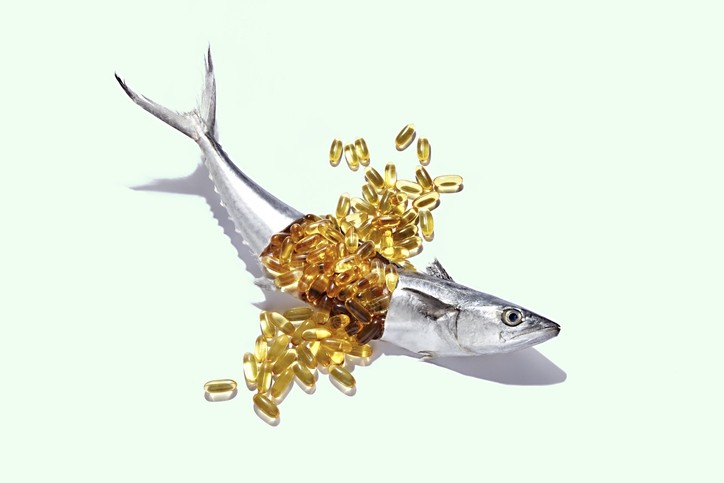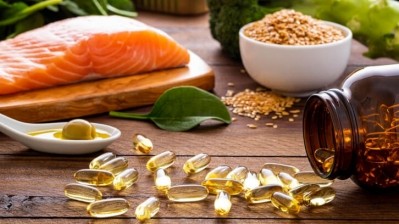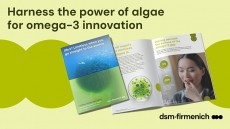Fish oil like liquid gold: 'There simply isn’t enough'

After a tumultuous year in fish oil supply, the GOED Exchange, hosted in Athens, Greece (Jan. 22-25), brought together a panel of leading industry experts to discuss strategies and opportunities to create a more prepared industry in a volatile environment.
What happened in Peru?
Regarding the reduced supply from Peru in 2023, Gonzalo Caceres, commercial director at TASA, the leading producer of fishmeal and fish oil worldwide, said Peru's government has been working very hard to ensure the sustainability of the industry.
He explained that every six months the government measures the number of fish in the sea—in the last 30 years the biomass has been very stable—before setting the fishing quota, which is usually set at no more than 20% to 25% of the total biomass. Finally, they measure fat or oil content of the catch, and anchovy should have 3% to 4%.
But last year this was the lowest ever reported, at around 0.5%, due largely to El Niño changing water temperatures and impacting fish food and behaviours. The government cancelled the country's first fishing season to allow marine populations to restore.
"Between 2022 and 2023 we lost a year of production, but actually this happened before," Caceres said. "In 1997-1998, we had a very difficult year, a very strong Niño and conditions similar to last year, so this wasn’t the first time this happened, and it won’t be the last time. The question is how do we prepare for that as an industry.
"Looking at projections, we are going to see neutral conditions—normal temperatures in the Peruvian sea—this is telling you the quota should be good, the biomass should be normal. The question is, what will the fat content be?"
He explained that not all fish oil contains EPA and DHA, and levels will vary, but oil used for human consumption should have at least 30% content, bearing in mind that the human consumption industry only uses around 20% of all that is produced.
He argued that we need to look at other avenues to increase supply, but the industry also needs to figure out a way to stock inventory when there are peaks in production, rather than reducing prices, to ensure a more steady supply.
Aquaculture demand
Gertjan De Koning, CEO at the marine algal oil firm Veramaris, added that the supply issue is really dominated by what’s happening with aquaculture because love of seafood is growing and "there’s only so much we can catch from the oceans in a sustainable way".
"Today, half of seafood consumed, is farmed," he said. "Aquaculture is by far the largest consumer of fish oil, and they have realised the importance of EPA and DHA for the health of their fish, so they have increased inclusion levels in their feed. Already, the market has outgrown the supply. Fish oil is a great product but there simply isn’t enough."
He pointed out that while these producers will usually use a lower quality, lowest-cost source, they will quickly switch to a more expensive source if that is unavailable in order to ensure the lives of their fish.
"That’s why last year suddenly the best oils were not available anymore," he said, adding they were also quick to embrace alternative oils and continue to support the alternative oil producers.
Consumer don’t understand ‘omega’
Sharing the U.S. market point of view, Ray Gosselin, EVP and chief operations officer at leading U.S. supplements brand Pharmavite, explained that the market—known as the ‘fish oil’ market—is worth nearly $600 million. He added that while dollar value of the market is up, demand has dropped due to price increases and general inflation.
"In terms of household penetration, we’ve lost 1.2 to 1.3 million consumers over the past 18 months or so as prices have risen," he said.
Discussing the extreme focus on 'fish oil' in the U.S., Gosselin explained what happened when his company tried to re-label its omega-3 products as ‘omega’ as opposed to ‘fish oil’ in 2018.
"When we went with that 'omega' label, our volume went down 24% in one year," he said. "U.S. consumers do not understand omega. We have a lot of education to do, and it’s important because there’s a lot of other sources outside fish oil."
He suggested that there is an opportunity to discuss the sustainability story in Peru, of being good stewards of the fisheries, to help consumers understand and convent them over to non-fish sources.
U.S. consumers have a tendency to think omega or EPA/DHA are not 'natural' like fish oil, which represents another education challenge for the industry, he added.
Using the whole fish
Discussing the importance of using by-products, Leif Gjendemsjø, founder and CEO at the Norweigan eco-friendly marine lipids producer Pharma Marine, pointed out that Norway used fish by-products for many purposes, such as lamp oil, in the past.
"We have to utilise what we harvest from nature, we have to utilise the whole fish," he said. "Many fish species, only one third is fillet, the rest is waste or by-products. Fishermen are cutting the fillet out and throwing the rest into the ocean.
"Worldwide there’s a lot of raw materials we can use to make protein and oil, but we have been spoilt by Peru for 30 years as they have been producing stable good quality fish oil. But things are changing and where fish oil use to be the cheap by-product, it is more like gold in the ocean."
He added that for the last 20 years, the main part of the fish has been used for direct human consumption in Norway, and the by-product has been used for fish oil but "in recent months, they have been taking the whole fish and using it for fish oil because the price of fish oil is so high".
Backup supply with blends
De Koning pointed out that all manufacturers should want to introduce an ingredient that does not rely on 'the mercies of nature' and so should blend with something such as algae oil which has a consistent quality and predictable availability.
"Keep using the sardine or anchovy oil, but add the algae oil so when a crisis hits you have everything in place because the aqua industry will be much quicker to react and they will take those oils," he said. "I know algae oil is not fish oil, but every fish oil started as algae."
"I remember in the past we were all competitors, but if you look at the market, it’s just not necessary anymore," he added. "I think what’s important is to tell consumers they need their EPA and DHA, no matter what the source."













